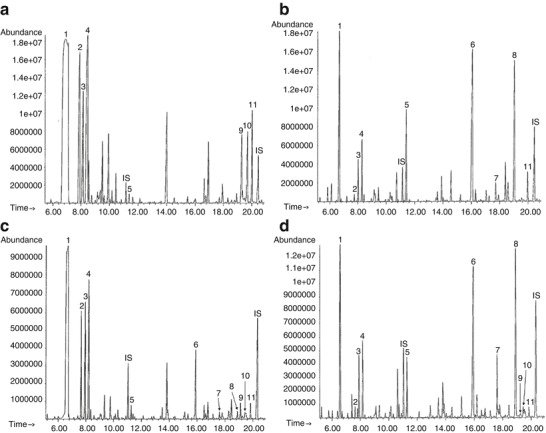Fig. 1.

Representative gas chromatography-mass spectrometry (GC-MS) organic acid chromatograms from urine specimens. (a) Urine sample collected from S1 on presentation prior to administering treatment. The tricarboxylic acid cycle intermediates 2-ketoglutarate, aconitate, and citrate were undetectable in the urine on presentation. (b) Urine sample collected from S1 after treatment with aspartate and citrate. (c) Urine sample collected from S2 on presentation prior to administering treatment. (d) Urine sample collected from S2 after treatment with aspartate and citrate. Horizontal axis reflects retention time, and vertical axis reflects total ion abundance. The following peak numbers correspond to compounds detected in both chromatograms: (1) lactate, (2) 2-hydroxybutyrate, (3) pyruvate, (4) 3-hydroxybutyrate, (5) fumarate, (6) 2-ketoglutarate, (7) aconitate, (8) citrate, (9) unsaturated sebacate, (10) sebacate, (11) 4-hydroxyphenyllactate. Internal standards (IS): 2-ketocaproate (approximately 11.0 min) and pentadecanoate (approximately 20.3 min)
